On a Hill in Alabama, the Lynched Haunt Us
Share
Explore Our Galleries
Breaking News!
Today's news and culture by Black and other reporters in the Black and mainstream media.
Ways to Support ABHM?
By Jamil Smith, Rollingstone.com
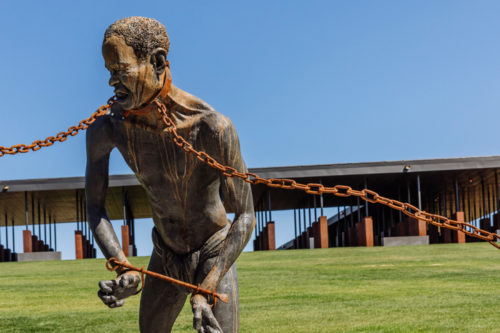
Part of a sculpture by Kwame Akoto-Bamfo on the grounds of the new National Memorial for Peace and Justice in Montgomery, Alabama.
Audra Melton/The New York Times/Redux
Drive along Interstate 65 in central Alabama between Birmingham and Montgomery, you can’t miss it. Some folks who call themselves the Sons of Confederate Veterans put up a massive Confederate flag, colors as bright as if it were brand new. The flag doesn’t just remind you that you’re in the Deep South. It makes you remember that “remember” is a verb. We memorialize deliberately, and with particular goals in mind.
In and around Montgomery, the former “cradle of the Confederacy,” you are surrounded by signs of hatred and treason. One could regard the new Legacy Museum and National Memorial for Peace and Justice, dedicated to the thousands of African American lynching victims since the Civil War, this same way, arguing that commemorating the victims of a heinous crime dregs up tensions and nothing else. The past is best left in the past, they say. (Some in Montgomery have already said as much.) But if that’s the case, as Equal Justice Initiative and new memorial founder Bryan Stevenson remarked, why does Montgomery have 59 markers and monuments to the Confederacy within its city limits?
“I think we’ve done a terrible job of talking about our history of racial inequality, and our silence about that history has left us vulnerable to a lot of the problems that we have today,” Stevenson told me last week during the memorial’s opening weekend. “And we’re going to have to create a new America.”
Lynching was a new kind of horror for the American descendants of kidnapped Africans. Ida B. Wells-Barnett, the Southern journalist who wrote critically about lynchings and was later exiled to Chicago after threats, wrote in her 1895 pamphlet The Red Record that “with freedom” for the newly emancipated, “a new system of intimidation came into vogue; the Negro was not only whipped and scourged. He was killed.” Lynching was the most sustained campaign of domestic terrorism outside of slavery’s holocaust. As Jesse Jackson noted last week in Montgomery, there still is no federal legislation banning lynching. More than 4,400 deaths between 1877 and 1950 were tallied by the Equal Justice Initiative. These are just the ones that Stevenson and his EJI team were able to count…
Full article here
More Breaking News here
See more ABHM galleries here
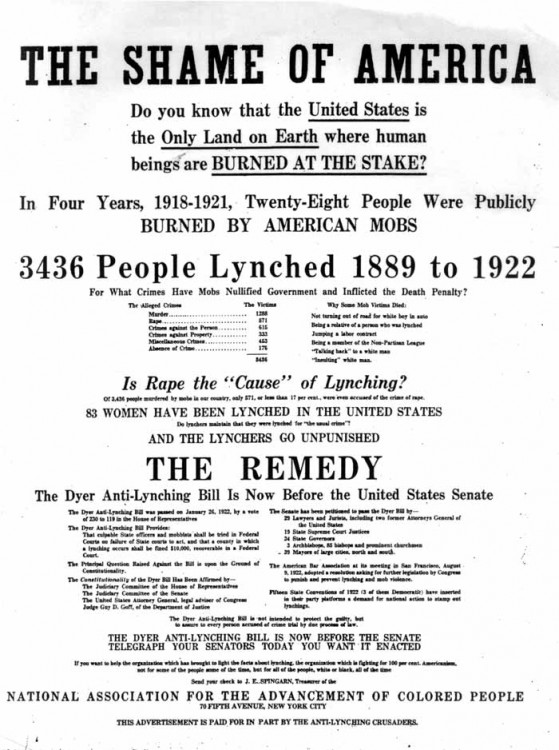
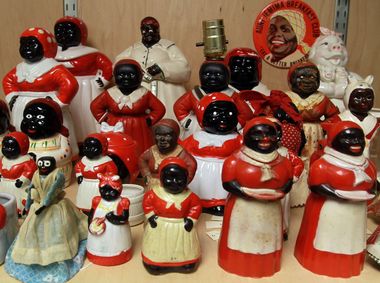


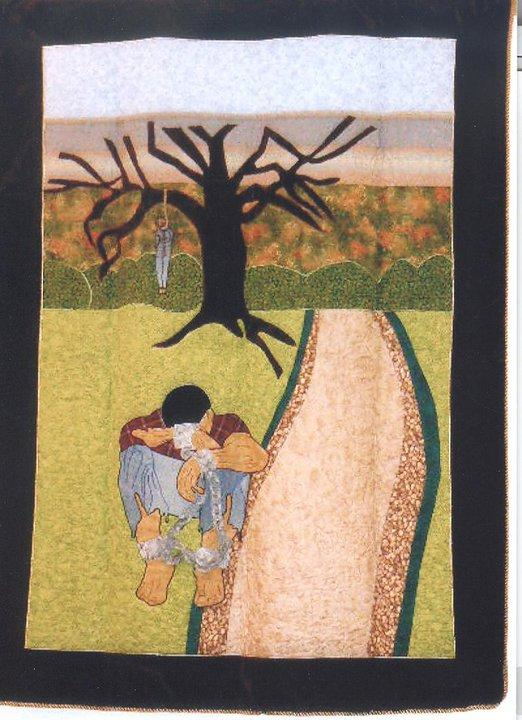

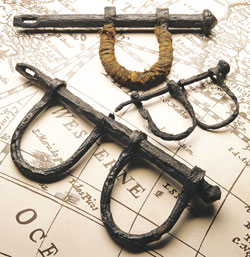


Comments Are Welcome
Note: We moderate submissions in order to create a space for meaningful dialogue, a space where museum visitors – adults and youth –– can exchange informed, thoughtful, and relevant comments that add value to our exhibits.
Racial slurs, personal attacks, obscenity, profanity, and SHOUTING do not meet the above standard. Such comments are posted in the exhibit Hateful Speech. Commercial promotions, impersonations, and incoherent comments likewise fail to meet our goals, so will not be posted. Submissions longer than 120 words will be shortened.
See our full Comments Policy here.